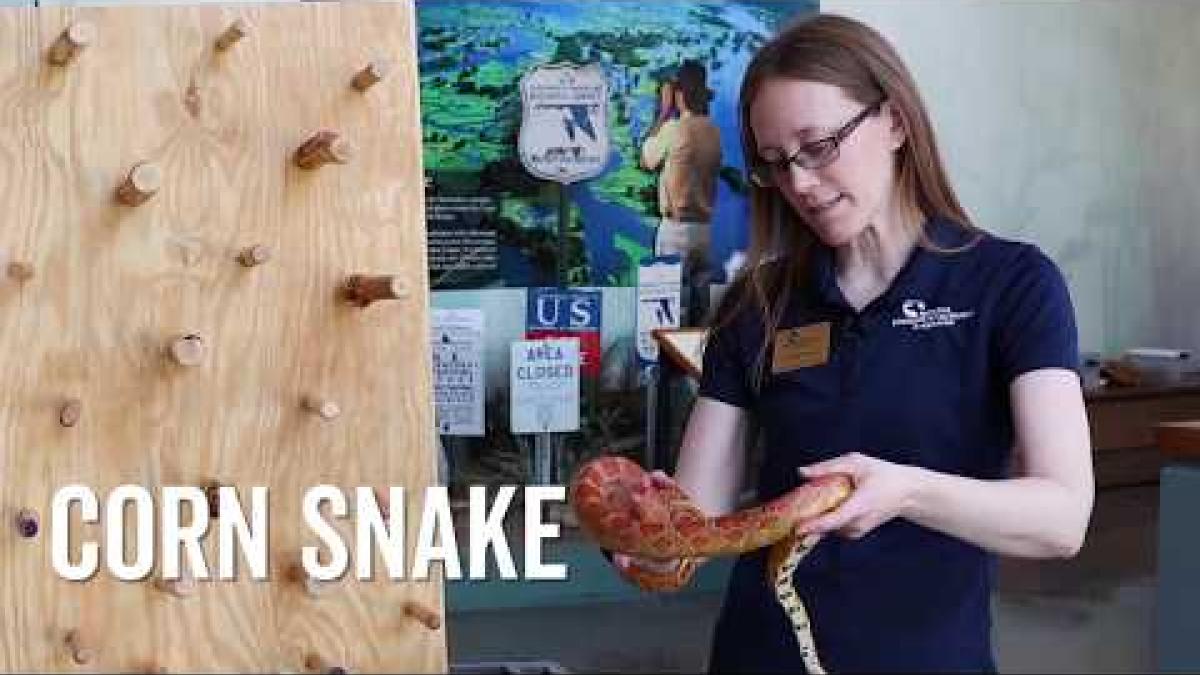The Corn Snake, also known as the red corn snake or red rat snake, is found in the southern portion of the Mississippi River Watershed, specifically the eastern and southeastern United States.
In terms of behavior, much of their time is spent underground or hidden beneath objects. They seek shelter in crevices within logs or caves during the winter. Most Corn Snakes hibernate from October to April, though southern populations can stay active later in the year and emerge earlier in the spring. When active, these snakes climb and find prey in trees and bushes. They are active both day and night but become increasingly nocturnal during the summer months.
These snakes are slender, medium-sized constrictors. They are brownish orange with red blotches emarginated in black that contrasts with their black and white checked belly. There are a wide variety of color morphs within the species and juvenile Corn Snakes are paler than mature snakes. The Corn Snake is harmless to humans; however, it is sometimes confused with the venomous Copperhead. The Copperheads have a triangular head, are darker in color, and have hourglass markings.
Most adult Corn Snakes weigh around two pounds. The snake is usually one and a half to three and a half feet long; however, the longest recorded Corn Snake was six feet long.
Corn Snakes play an important role in the food chain and help control rodent populations. They eat rodents, lizards, eggs, and birds. These snakes rely on their speed and camouflage to avoid predation from raptors, foxes, bobcats, and other snakes.
These snakes lay eggs between May and July when females select warm and humid stumps, logs, and burrows to protect their developing offspring. Each clutch contains 10-15 cylindrical eggs that measure up to 2.5 inches long. The Corn Snakes hatch two months later, with the young snakes measuring 10-15 inches. They fully mature after 18-36 months.

Did you know?
Corn snakes may have gotten their common name from the belly markings that resemble the kernel pattern on Indian corn, the fact these snakes are found in corn and other crop fields, or the fact they can be found in barns where rats come to feed on corn and other grains.
